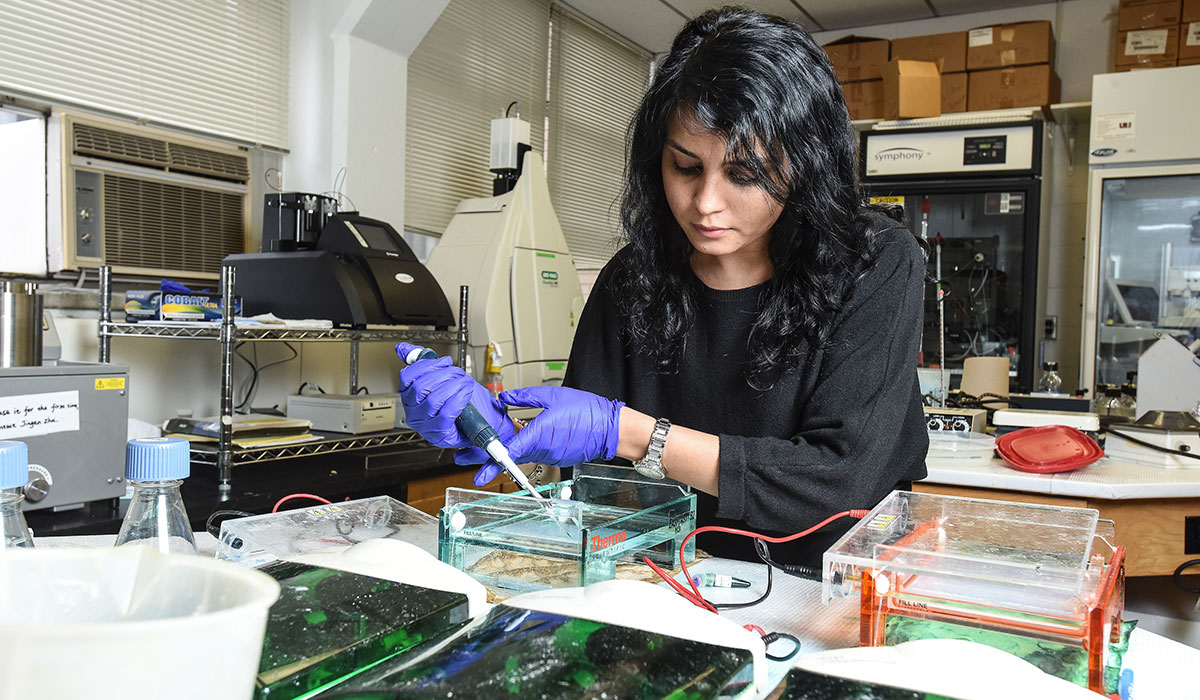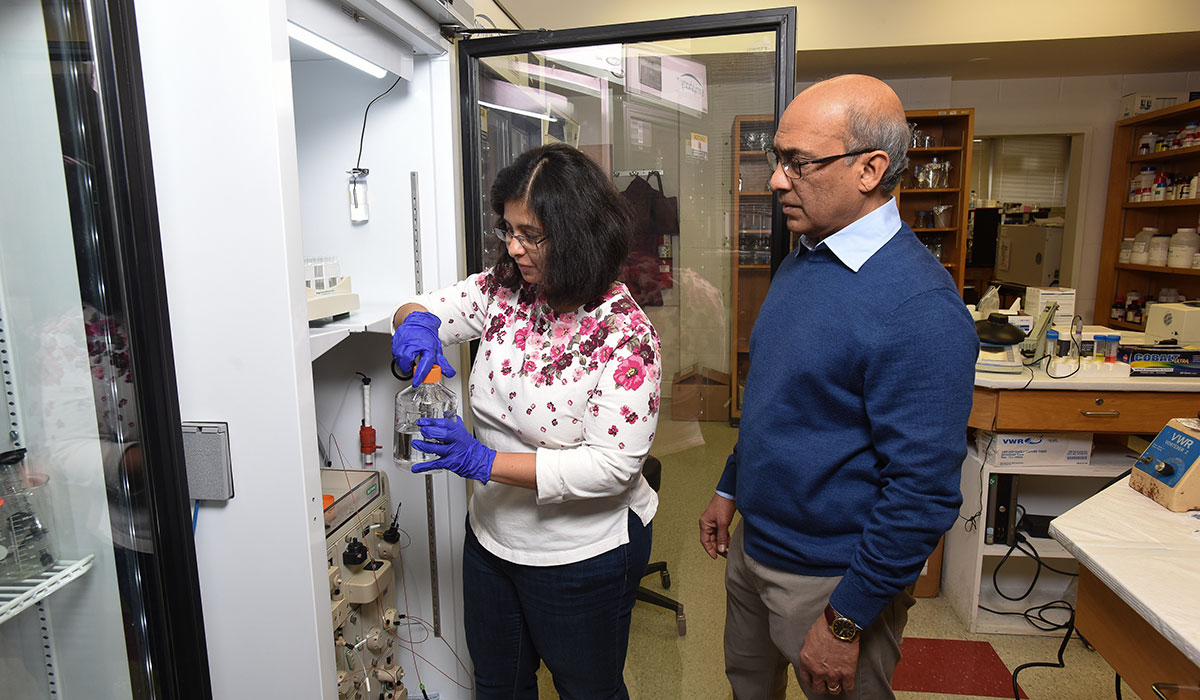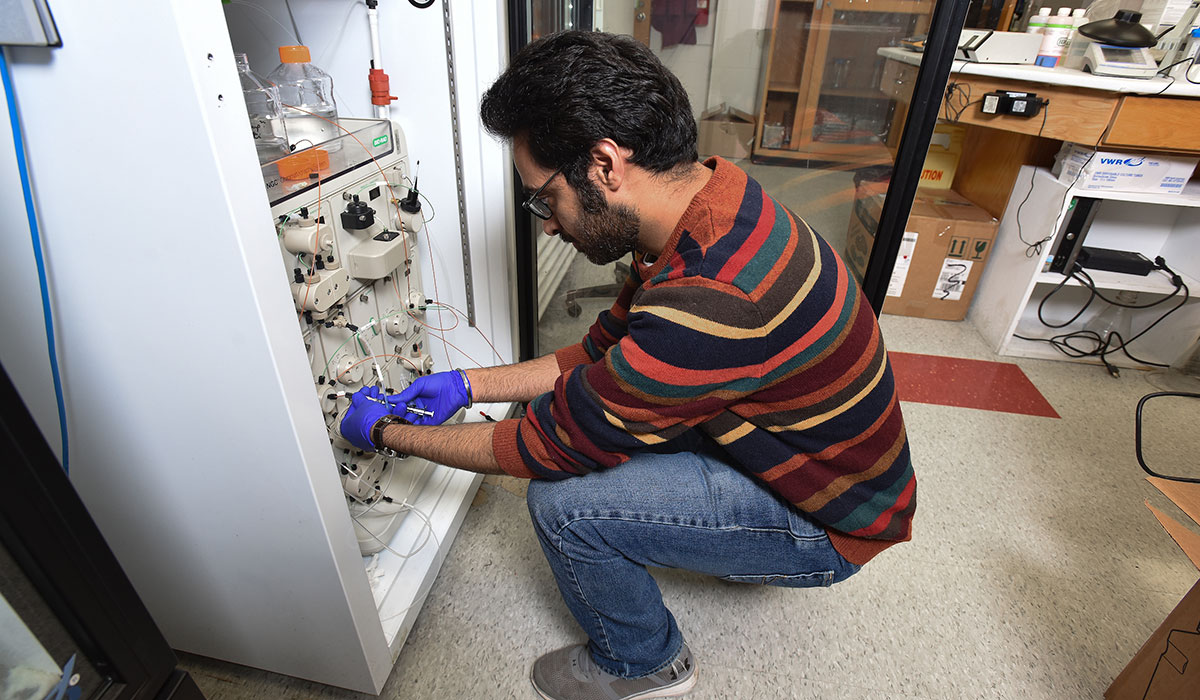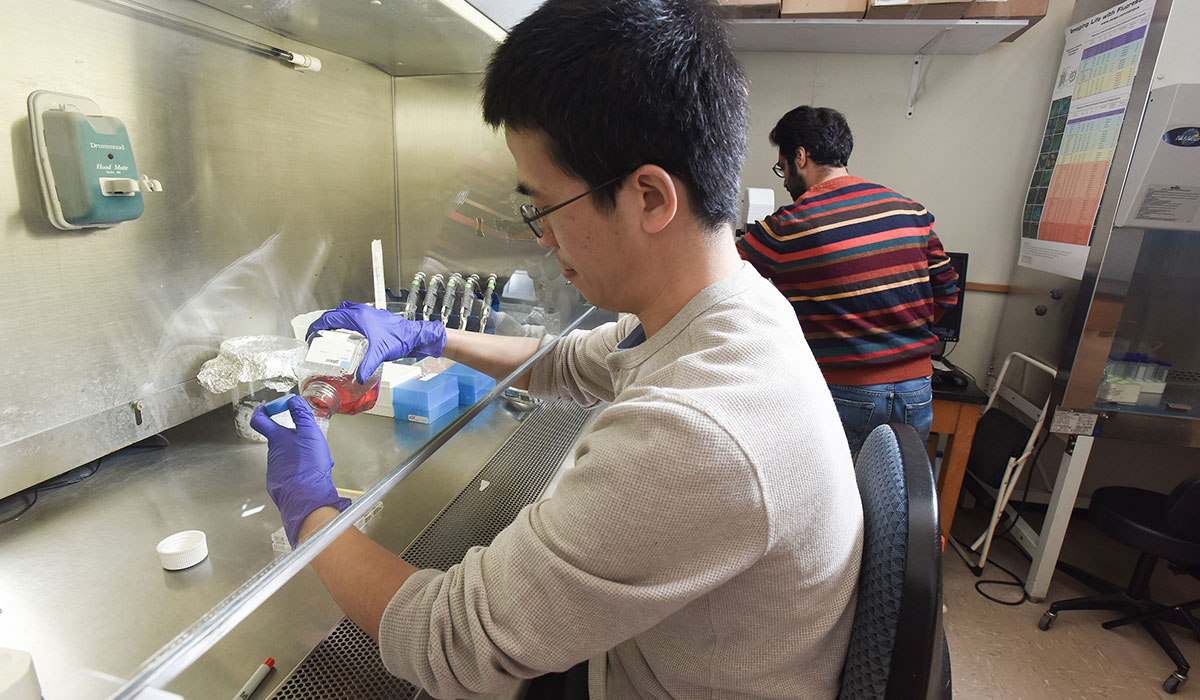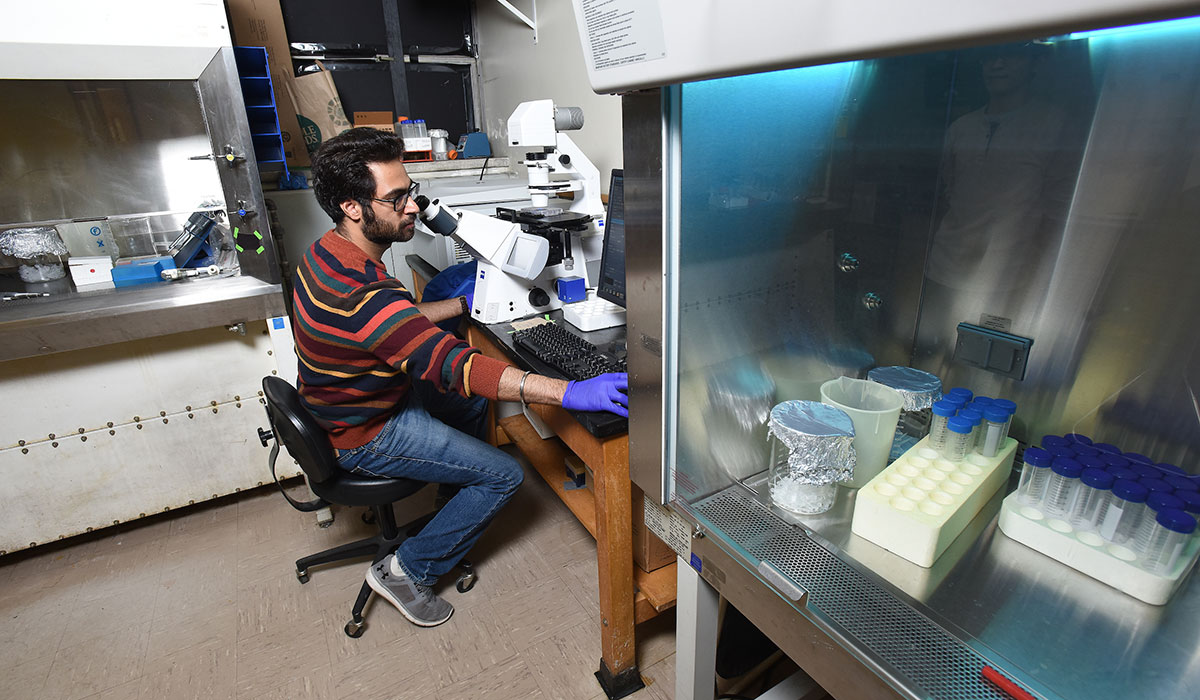
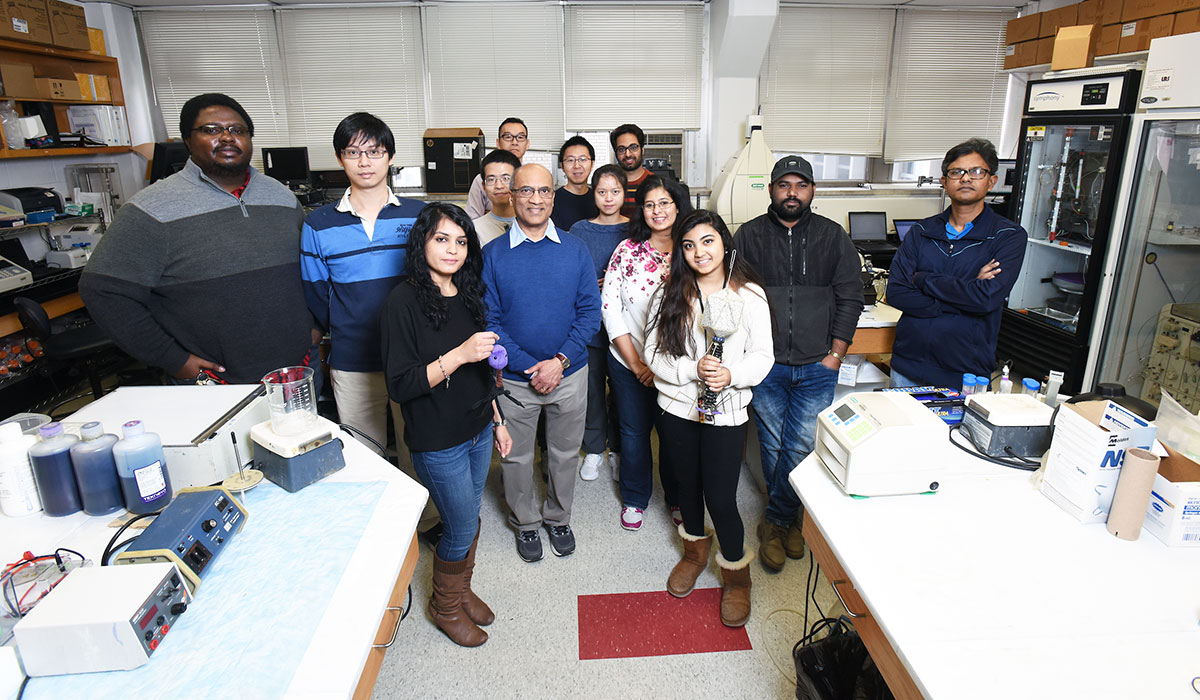
Venigalla Rao, professor and chairman of the Department of Biology, ended 2018 on a high note by publishing his latest research article in the Dec. 21 issue of the prestigious Nature Journal, Nature Communications. A few weeks later, he heard that a new article is expected to be published by the same journal in the coming weeks, pending revisions. These articles are just the latest of more than a dozen high-profile articles and grants to emerge from his lab in the past 18 months.
Rao is the director of Catholic University’s Center for Advanced Training in Cell and Molecular Biology and a leading expert on viruses and associated applications such as vaccine development. Since founding his lab in 1989, he has maintained a very active multi-disciplinary research program by applying for grants and pursuing as many research angles as he could. Now, with the many successes of this past year and half, Rao believes he is getting closer and closer to his ultimate goal: creating a unique bacteriophage T4 virus platform to cure diseases, including HIV or even cancer.
“Viruses have probably evolved over millions of years, so that they can efficiently enter our cells and use our cells as factories to produce new viruses. This makes us sick and is sometimes deadly” Rao said. “We are trying to program the viruses in a test tube such that they can enter our cells but perform specific tasks or repairs that benefit us rather than infect us.” These specific tasks include gene therapy, stem cell therapy, immunotherapy, and so on.
In October, Rao’s development of a novel biodefense vaccine that protects against both anthrax and plague was featured in Newsweek magazine.
The many articles and grants garnered by Rao and his team in the Department of Biology have covered a wide range of research topics from the basic mechanisms of viral DNA packaging to anthrax and plague vaccine, atomic structures of molecular machines, CRISPR genome editing, and an HIV vaccine. What links them, Rao said, is one underlying goal: “to learn about the basic mechanisms of a virus at the deepest level possible and apply this knowledge to redesign the virus for beneficial purposes.”
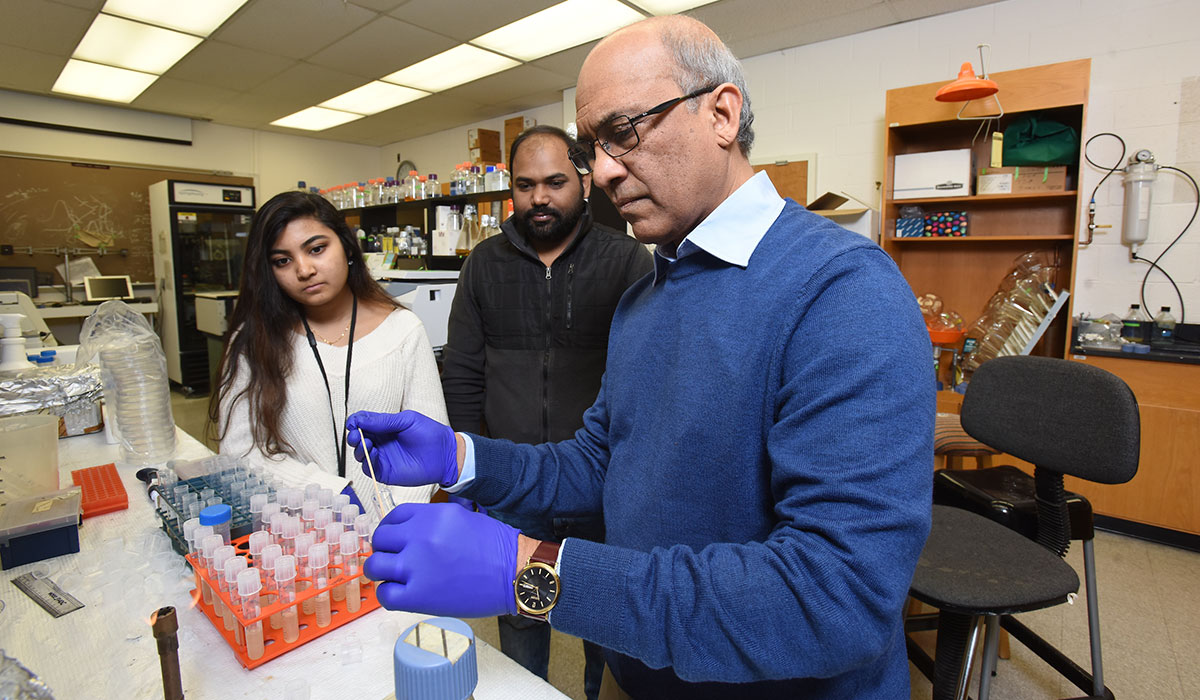
Rao’s latest article is co-authored with Professor Douglas Smith from the University of California, San Diego. It explores how nucleotides — the basic structural units of nucleic acids like DNA — regulate the viral DNA packaging motor within bacteriophage T4, a benign virus Rao has been studying for nearly four decades.
Rao’s lab, which consists of a team of postdoctoral fellows, undergraduate and graduate students, has also been recognized with several high-level research grants, including a prestigious grant from the National Science Foundation (NSF) in August, totaling nearly $1 million. This grant will fund cutting-edge research on how the DNA genetic material is tightly packaged inside a protective viral compartment called the capsid to facilitate the spread of viruses and infection.
NSF has been awarding Rao highly competitive research grants through five successive cycles, totaling 20 years. According to the research abstract, this work “will have broad implications for understanding powerful molecular motors that carry out numerous and diverse functions in living organisms.” The funding will also provide research opportunities for students from high school through post-doctoral studies to present their research at international conferences.

In addition to ongoing research grants from the National Institutes of Health (NIH), Rao’s lab was recently awarded a Bench-to-Bedside grant from the NIH. For that project — which will develop bacteriophage T4 nanoparticles for a HIV cure — Rao is paired with two scientists from the National Cancer Institute: Frank Maldarelli and Mary Kearney.
For Rao, the forward progress of the past year has been “very inspiring” and exciting.
“We are getting very close,” he said. “If someone were to give us the necessary funds, we could potentially be moving towards human trials in about five years to cure a disease, using our technology.” Catholic University received a number of U.S. and international patents on Rao’s technology. “Now we should be leaping forward, not just walking forward,” he said.
“The work done by Rao and his lab has consistently been of the highest quality,” said Ralph Albano, associate provost for research. “His ability to continue to receive grants from the most competitive programs has been remarkable. His work provides the University and our students with a valuable asset that demonstrates world class research and education.”
Though his team has experienced setbacks in their research over the years, Rao said they “always learn something new” from each so-called failure, and that he loves the sense of discovery that comes with the scientific process.
“There are obviously major challenges involved in what we would like to accomplish, but that’s the fun part of it,” he said.
Rao credits his long-time collaborators – Michael Rossmann from Purdue University; Smith from UCSD, Ashok Chopra from University of Texas Medical Branch, Steve Leppla from NIH, and Carl Alving and Mangala Rao from Walter Reed – for the “pure joy” of doing science and numerous discussions they share on a regular basis.
Rossmann first met Rao during a Bacteriophage Assembly meeting in Finland.
“I quickly realized that he has expertise in examining bacterial viruses (bacteriophages) that dovetailed with my interest and experience in structural virology,” Rossmann said. “Since then we have worked closely together, combining our quite different types of skills. This has developed into a wonderful friendship well beyond the science itself.”
“This is what science is supposed to be,” Rao said. “You do basic research to get a glimpse of the truth of nature at the subtlest level possible, for biologists it is at the atomic level, but you always keep an eye on how we could potentially use this research to benefit society. I think as scientists, that’s part of our responsibility.”
